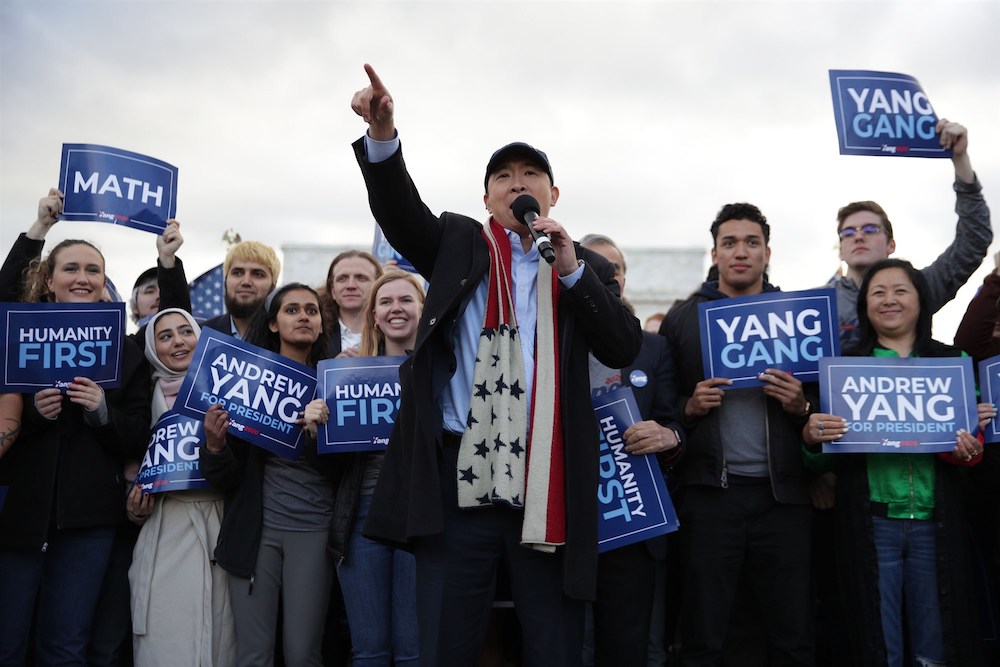
MATTHEW FORBES – APRIL 20, 2018
Milton Friedman, in his work Capitalism and Freedom, argues that one of the largest benefits of a free market system is that it protects people “from being discriminated against in their economic activities for reasons that are irrelevant to their productivity.” In a competitive free market, he explains, any firm that discriminates on the basis of race, gender, ideology, or any other attribute unrelated to worker performance imposes a cost upon itself, and thus the owners would eventually be driven out of business by firms that do not discriminate. Friedman then concludes that the free market actively works to encourage moral behaviour and offers a shield for vulnerable groups in society, and that it is the best and most efficient method of doing so.
Does this claim hold up to scrutiny? Let’s begin by examining an idealized society.
Imagine a society that is composed of two identical groups of people, Group A and Group B. Then imagine that there is a firm within this society that wishes to only hire workers from Group A. This means that this firm’s supply of potential workers is reduced and that the firm will run out of workers willing to work for a certain wage (say, $10 an hour) faster than if this firm wasn’t discriminating. The firm now has to face a choice: do they raise wages in order to attract more workers from Group A, or do they hire workers from Group B at $10 an hour? If the firm chooses the first option, they will be paying a higher cost to manufacture their product than their competitors who don’t discriminate. Thus, the discriminating firm must sell their product at a higher price than their competitors and will soon be driven out of business.
Friedman argues that this process is what ended the Hollywood blacklist that arose during the Red Scare of the 1950s. Many actors, actresses, and screenwriters suspected of being communist sympathizers were placed on widely distributed blacklists. Movie studios initially refused to hire anyone on these lists. However, the blacklists created a large pool of qualified workers who were unemployed and thus willing to work for lower wages. Many studios could not resist the temptation to hire these cheap workers, while those that still refused to do so faced higher production costs, as their workers were relatively more expensive. In the end, all the studios ignored the blacklist and wages returned to normal.
Partly for this reason, many economists oppose minimum wage laws, which they believe encourage discrimination. During the Red Scare, firms had to decide whether to discriminate—and effectively raise wages and face higher production costs—or not to discriminate. Minimum wage laws make this choice for firms by forcing them to raise wages. With these laws in place, firms will have a larger pool of candidates that they are biased towards hiring and more leeway to discriminate.
Friedman also presents a modified version of this model from the point of view of consumers. A consumer that only wishes to purchase goods or services from one group of people necessarily limits their number of potential suppliers. Thus, if one supplier were to raise the price of their product, a consumer is less able to find a cheaper substitute than a non-discriminating consumer. In this way, consumers are incentivized to only focus on the economic transaction taking place.
This theory looks tidy and neat on paper, but there are several issues that arise when it is put into practice.
For starters, discrimination continues to play an enormous role in American economic life, suggesting that the free market alone isn’t sufficient to prevent discrimination from occurring. This discrimination was worse during the era of Jim Crow, when the economy was less regulated compared to today. The Sherman Antitrust Act was only passed in 1890, the Pure Food and Drug Act was passed in 1906, the Federal Reserve was created in 1913, and the government’s role in the economy really took off after the New Deal of the 1930s; however, the Ku Klux Klan was founded in 1866 and expanded greatly throughout the 1870s, Jim Crow was in full swing since 1877, and extreme violence towards African Americans occurred before, during, and after this period of expanding government intervention in the economy. An unregulated free market did not provide the necessary incentives to prevent these tragedies from occurring.
Secondly, this model says nothing about markets that are less competitive and more monopolistic, where individual firms are less sensitive to changes in their production costs. As the economy advances and industries become more complex, barriers for firms to enter markets become higher and perfect competition becomes an increasingly difficult ideal to uphold. For example, if a firm were to discover a better search algorithm than the one Google currently employs, they still would not be able to compete with Google because the technical infrastructure needed to support internet searches is abhorrently expensive, which no small startup can afford. Thus, Google enjoys an enormous head start in this market in that it is practically impervious to competition (point in case: who uses Bing? Basically, only those who had Bing preset as their browser’s search engine and couldn’t be bothered to change it). Under these new conditions, individual firms can afford to potentially discriminate because competition is not intense. Friedman’s model may prove true if each market in our economy was only composed of an infinite number of small, independent lemonade stands operating on every street corner, but this is not what the economy actually looks like.
Finally, one can imagine situations where it is within a firm’s or an individual’s economic interest to discriminate. For example, imagine a restaurant located in a racist community where minorities constitute a small fraction of the population. By refusing to hire minorities, the restaurant may be hailed as heroic by the racist majority and thus become more popular.
A concrete example of this occurring was the phenomenon of blockbusting in the 1950s and 1960s. Realtors would purposely sell homes in white neighbourhoods to black families, which led to drops in home prices because of widespread racial prejudices at the time. White families in these neighbourhoods would then be incentivized to sell their homes as quickly as possible, causing home prices to drop further, allowing realtors to purchase the homes at bargain prices. This process deepened racial segregation and occurred because of free market incentives.
Friedman’s theory may prove correct under certain circumstances. However, reality is often messier than any theory can fully capture, and neither are people always perfectly rational actors. If history is any guide, we should recognize that while the free market may disincentivize discrimination, it is not a sufficient force to eliminate it.
Featured Image: Bohm Law Group
Disclaimer: The views published in this journal are those of the individual authors or speakers and do not necessarily reflect the position or policy of The Berkeley Economic Review staff, the Undergraduate Economics Association, the UC Berkeley Economics Department and faculty, or the University of California at Berkeley in general.




Very good article, very sensible!
Jim Crow was the opposite of free market. Just like how the Davis-Bacon Act protected white union workers from up and coming black carpenters.